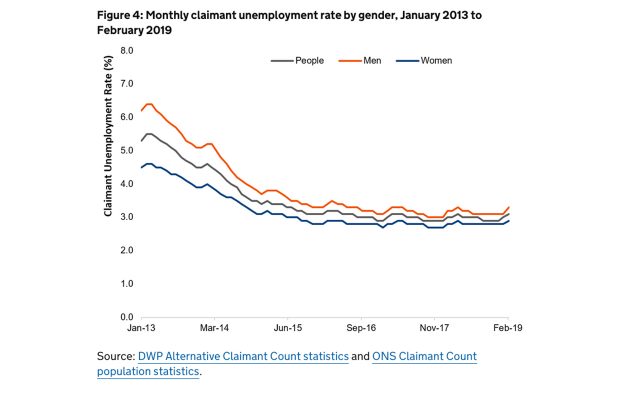
In DWP we publish in excess of 180 statistical publications, all of which are currently produced as PDF documents.
The statistical reports we produce cover work, unemployment and employment support schemes to health, disability and care and spending, fraud and error.
Traditionally we’ve used a PDF template as standard to publish these reports on GOV.UK. The PDF template was designed and developed by statisticians but in a digital age there are preferred options.
When I was working on a new statistical series to provide an alternative to the Office for National Statistics (ONS) Claimant Count, I was inspired to do things a little differently.
From previous jobs I’d learned a great deal about the flexibility and versatility web-based products offer and decided I wanted to experiment by designing and publishing this new report in HTML.
Getting the ball rolling
HTML publishing for statistical releases is not a new phenomenon across government or in the private sector, but it had not been done before in DWP. Even though I had the enthusiastic support of my line manager, some pragmatism was required.
The first step was meeting with our web publishing team to discuss collaborating on the new approach. It was apparent that HTML was an option we both wanted to explore, they just needed a willing candidate to trial something to replace the current PDF template.
I learned a lot about how to structure a HTML release, the type of charts that are supported and how other departments like the Home Office use HTML.
This was enough to get us started. Here’s what we learnt along the way:
1. HTML is better for users
Around 70% of people visit GOV.UK on either a phone or a tablet. Although PDF statistical releases render OK on phones/tablets, often text is quite small and navigation is difficult. HTML releases on GOV.UK are optimised to be responsive, meaning the site will look different depending on the device used, making navigation through the release much easier.

2. It’s easier to iterate
The flexibility offered by HTML made it easier to develop a content structure and format. Sections of content can be repositioned quickly with no need to worry about text or image sizing or text box positioning. HTML makes content flow better for the reader and keeps font and image sizes consistent throughout. It also offers more interactive aspects like charting and mapping as well as navigation through the entire body of the release. It was also quick to convert the template into Markdown, the language used for publishing on GOV.UK.
3. HTML is more accessible
GOV.UK has a legal obligation to make all content on the website fully accessible and HTML releases are designed to meet accessibility standards. This is so they can be used by as many people as possible, including those with disabilities. Compared with HTML content, information published in a PDF is harder to find, use and maintain. More importantly, unless created with sufficient care, PDFs can often be bad for accessibility and rarely comply with open standards.
4. The GOV.UK content management system restricts some HTML functionality
Ideally, the ability to publish an HTML release should lend itself more readily to interactive products like JavaScript libraries, but this functionality, along with HTML styling, is not yet available through the content management system (CMS) provided by GDS for GOV.UK.
The CMS also restricts the choice of charts available to use to just 3 types of bar chart – standard, stacked and comparative. Although the bulk of statistics can be drawn to a bar chart, I needed a number of other types of chart for my release that is column and line. The way I got around this for now was to create the chart in another piece of software and present it as an image, rather than an interactive chart.
Plus, the colours available in the CMS don’t strictly follow Office for National Statistics accessibility recommendations.
5. It could be challenging to roll out
I have some past experience of HTML development so for me the work behind writing the code wasn’t too difficult. However, to move beyond the proof of concept stage, there’s a question of scalability to the rest of the statistical releases in DWP. As part of this proof of concept I’ve constructed a word template, but the process of getting a word document into HTML takes the web publishing team a lot longer if the team constructing the release has no knowledge of HTML or Markdown.
Building on the proof of concept
Due to the success of the proof of concept we are currently working on migrating all statistical PDF releases our team produces to HTML, so this is a good result.
My experience of producing the first HTML statistical release has been mostly positive. I believe it’s modernising the way we produce statistics and as we move forward in our journey of transformation, it’s a huge step in the right direction.
Like this blog? Why not subscribe for more blogs like this? Sign up for email updates whenever new content is posted!

1 comment
Comment by Alex posted on
Great read and a fantastic insight into HTML publishing!